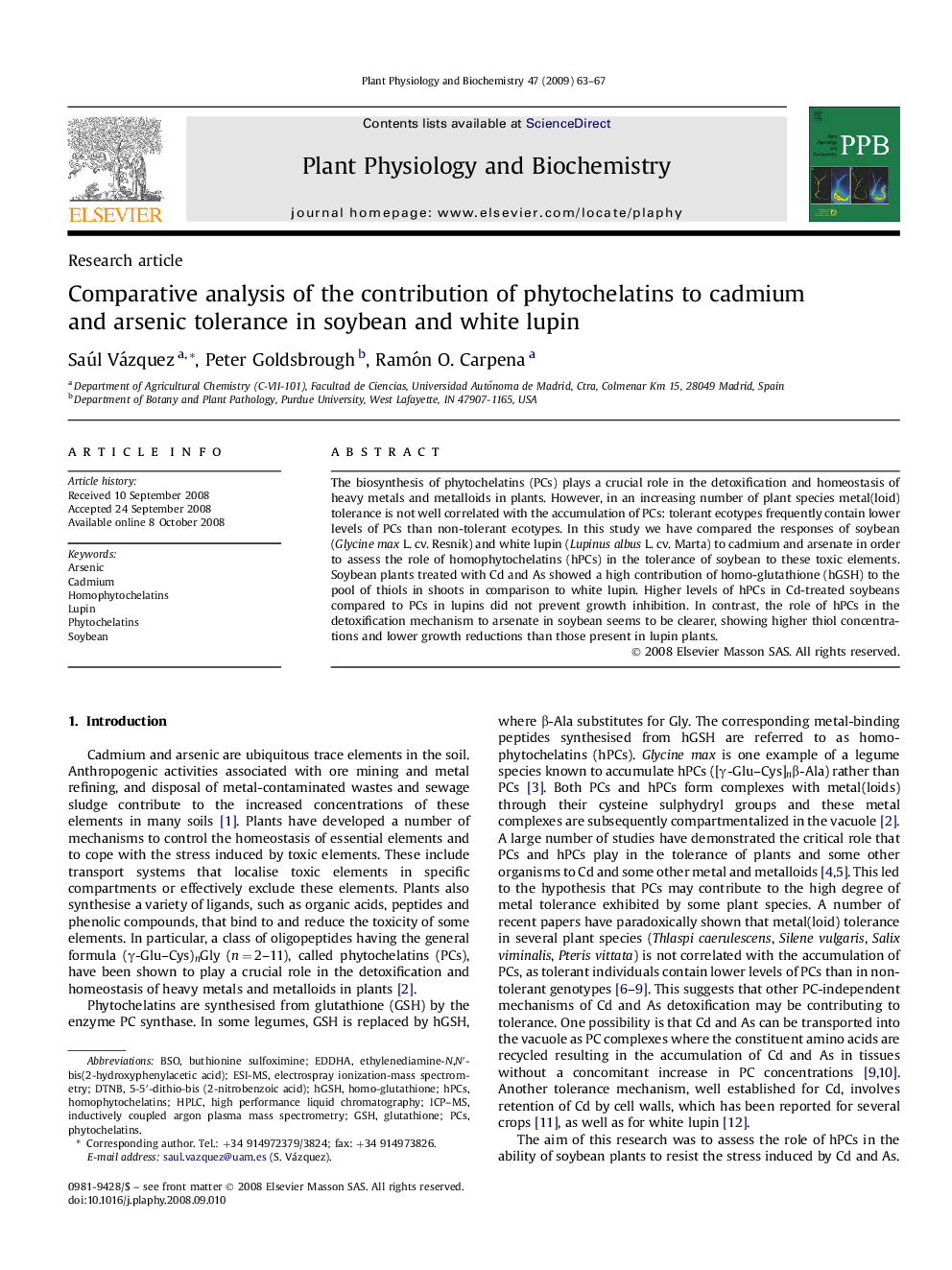| Article ID | Journal | Published Year | Pages | File Type |
|---|---|---|---|---|
| 2015421 | Plant Physiology and Biochemistry | 2009 | 5 Pages |
The biosynthesis of phytochelatins (PCs) plays a crucial role in the detoxification and homeostasis of heavy metals and metalloids in plants. However, in an increasing number of plant species metal(loid) tolerance is not well correlated with the accumulation of PCs: tolerant ecotypes frequently contain lower levels of PCs than non-tolerant ecotypes. In this study we have compared the responses of soybean (Glycine max L. cv. Resnik) and white lupin (Lupinus albus L. cv. Marta) to cadmium and arsenate in order to assess the role of homophytochelatins (hPCs) in the tolerance of soybean to these toxic elements. Soybean plants treated with Cd and As showed a high contribution of homo-glutathione (hGSH) to the pool of thiols in shoots in comparison to white lupin. Higher levels of hPCs in Cd-treated soybeans compared to PCs in lupins did not prevent growth inhibition. In contrast, the role of hPCs in the detoxification mechanism to arsenate in soybean seems to be clearer, showing higher thiol concentrations and lower growth reductions than those present in lupin plants.
